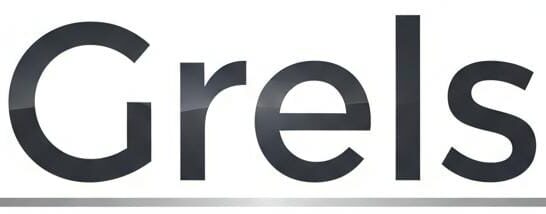IRS Tax Debt Relief Program 2025: Complete Guide for Taxpayers
Dealing with the IRS can be overwhelming—especially if you owe back taxes, penalties, or interest. The good news? The IRS offers several tax debt relief programs that can help struggling taxpayers settle their debt for less, pay over time, or even have portions forgiven.
In 2025, more than 11 million Americans face back tax issues, making IRS tax debt relief programs more important than ever. This guide will cover what IRS tax debt relief is, the main programs available, how to qualify, and tips for reducing your tax burden.
What Is IRS Tax Debt Relief?
IRS tax debt relief refers to programs designed to help individuals and businesses manage, reduce, or eliminate tax debt. These relief options can involve:
- Reducing the total amount owed.
- Extending the payment timeline.
- Waiving penalties and interest in certain cases.
- Temporarily pausing collection efforts.

Types of IRS Tax Debt Relief Programs in 2025
The IRS provides several structured programs depending on your financial situation and eligibility. Let’s explore the most common options:
1. Offer in Compromise (OIC)
The Offer in Compromise is the IRS’s most well-known relief program, allowing taxpayers to settle their debt for less than the full amount owed.
- Who Qualifies: Taxpayers unable to pay their full tax liability without financial hardship.
- Benefits: Could save tens of thousands by negotiating a reduced settlement.
- Average Savings: Many taxpayers pay only 20–50% of their debt.
- Downside: Requires strict financial disclosure and IRS approval is not guaranteed.
💡 Pro Tip: Use the IRS OIC Pre-Qualifier Tool to check eligibility before applying.
2. Installment Agreements (Payment Plans)
If you can’t pay your full tax bill upfront, you can request an installment agreement, allowing you to pay over time.
- Types:
- Short-term plans (up to 180 days).
- Long-term plans (up to 72 months or more).
- Fees: Setup fees range from $31 to $225, though lower for online applications.
- Pros: Affordable monthly payments; IRS halts aggressive collection actions.
- Cons: Interest and penalties continue until debt is fully paid.
3. Currently Not Collectible (CNC) Status
If paying any amount would cause severe financial hardship, the IRS may place your account in Currently Not Collectible status.
- Benefit: Collections temporarily stop (no levies, no garnishments).
- Drawback: Interest and penalties continue to accrue, and CNC is not permanent.
- Who Qualifies: Taxpayers who prove they have no disposable income after necessary living expenses.
4. Penalty Abatement
IRS penalties can sometimes double or triple your original tax debt. With Penalty Abatement, you may qualify to have these fees reduced or eliminated.
- Types of Relief:
- First-time penalty abatement (FTA).
- Reasonable cause (e.g., illness, natural disaster).
- Impact: Can significantly lower total tax owed.
5. Innocent Spouse Relief
If your spouse (or ex-spouse) improperly reported taxes on a joint return, you may qualify for Innocent Spouse Relief, which removes liability from your portion.
- Best For: Divorced or separated individuals unfairly saddled with a partner’s tax errors.
- Benefit: Protection from unfair tax liability and collections.
6. Partial Payment Installment Agreement (PPIA)
A hybrid between an OIC and installment plan, PPIAs allow you to make monthly payments for a set period, often reducing the total balance owed before the remaining debt expires under IRS statute of limitations.
- Pros: Lower monthly payments and reduced total balance.
- Cons: Requires ongoing financial review.

How to Qualify for IRS Tax Debt Relief Programs
The IRS does not approve relief programs automatically. To qualify, you must:
- Be compliant – All past tax returns filed.
- Disclose financials – Provide full details of income, expenses, assets, and debts.
- Show hardship – Demonstrate inability to pay full debt without financial distress.
- Meet deadlines – Apply within IRS statute of limitations (generally 10 years).
Professional Tax Relief Companies vs. DIY
When facing IRS debt, taxpayers often wonder: Should I hire a tax relief company or handle it myself?
- Hiring a Professional:
- Pros: Experts negotiate with the IRS, higher success with OIC and penalty abatement.
- Cons: Fees ($3,000 – $7,500+) may be expensive.
- DIY Approach:
- Pros: Save money, IRS forms available online.
- Cons: Complex paperwork, higher rejection risk if not completed correctly.
⚠️ Warning: Avoid scams—work only with licensed tax attorneys, CPAs, or enrolled agents.
Common Mistakes Taxpayers Make
- Ignoring IRS notices (leads to wage garnishments or liens).
- Choosing the wrong relief program.
- Falling behind on future tax payments while on a relief plan.
- Hiring unverified “tax settlement companies.”
The Cost of Not Seeking Relief
Failing to address IRS tax debt can result in:
- Wage Garnishments – IRS takes a portion of your paycheck.
- Bank Levies – IRS freezes and seizes funds from your bank account.
- Property Liens – IRS claims against your home or assets.
- Damaged Credit – Tax liens can lower credit scores and hinder financing.
Seeking relief can prevent or stop these aggressive actions.
IRS Fresh Start Program (Special Mention)
The IRS Fresh Start Program (still active in 2025) is designed to help taxpayers more easily qualify for OIC, installment agreements, and penalty relief.
- Lower Qualification Thresholds – Easier to qualify for OIC.
- Expanded Installment Terms – Longer repayment timelines.
- Tax Lien Relief – Higher debt thresholds before liens are filed.

Steps to Apply for IRS Tax Debt Relief
- File all past-due returns (even if you can’t pay).
- Review your finances – income, expenses, assets.
- Choose the best program for your situation.
- Submit required forms:
- Form 656 for Offer in Compromise.
- Form 9465 for Installment Agreement.
- Form 8857 for Innocent Spouse Relief.
- Await IRS decision (can take weeks to months).
Final Thoughts
Owing money to the IRS can feel overwhelming, but IRS tax debt relief programs provide a real path to financial freedom. Whether through an Offer in Compromise, installment agreement, or penalty abatement, taxpayers have options to reduce their burden and avoid aggressive collections.
The key to success? Act quickly, stay compliant, and seek expert help if needed. With the right approach, you can resolve tax debt and move forward with peace of mind.



